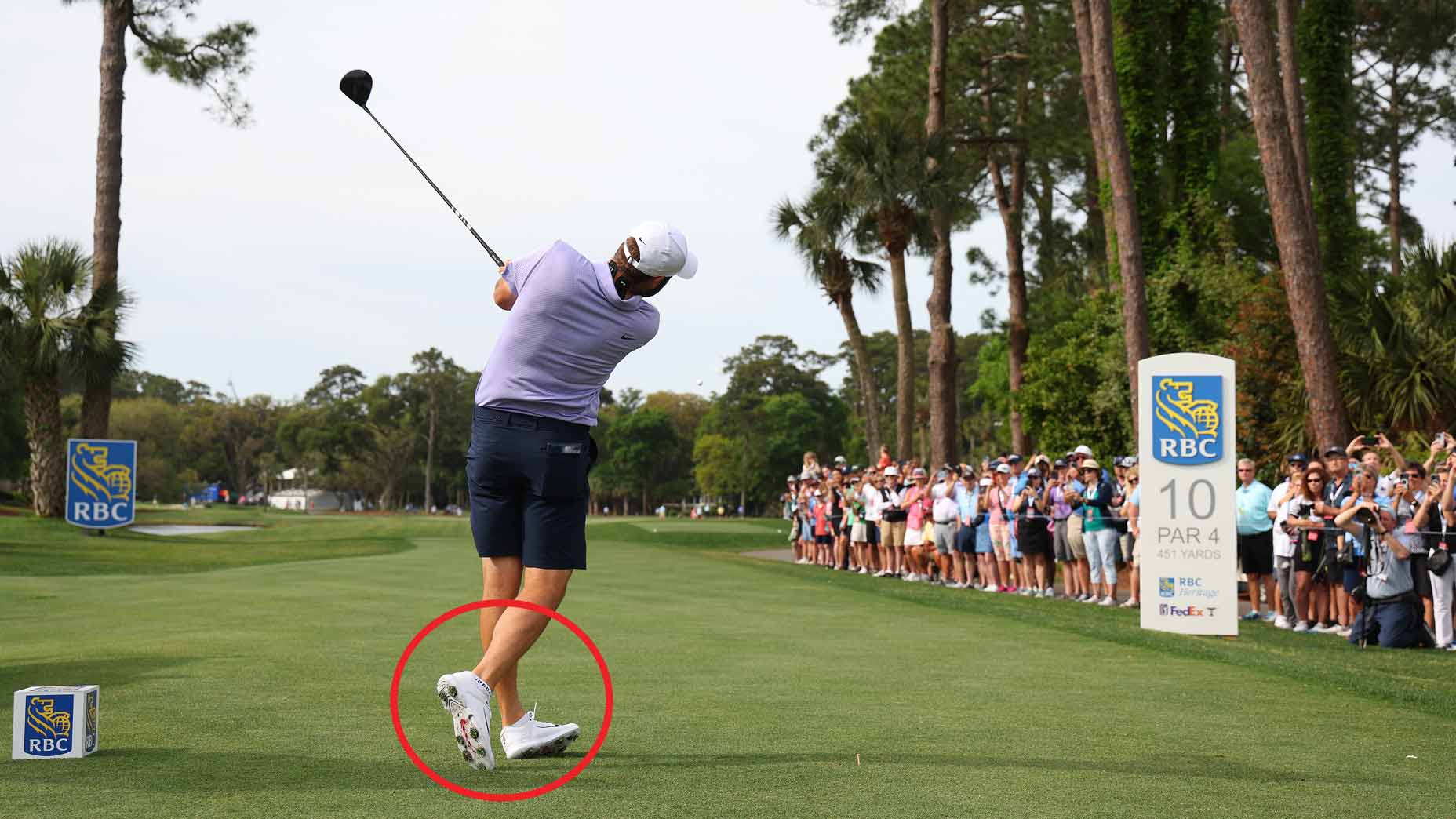Scottie Scheffler is the best male golfer on the planet at the moment — and it’s not particularly close. Over the last month he’s won the Players Championship, the Arnold Palmer Invitational and the Masters. In his other start (Houston Open), he finished T2. Not too shabby, eh?
The catalyst of this stretch of dominance was a putter switch before the API, but Scheffler’s ball striking has been the real MVP of his consistency. He leads the PGA Tour in SG: Tee to Green this season at 2.8 strokes per round, and the gap between him and his nearest competitor (Xander Schauffele) is the same as the gap between second and 24th.
Scheffler like to keep things simple, and that shows up in his training. He’s not obsessed with advanced technique. Instead, he’s all about perfecting the fundamentals.
“I feel like when my swing gets off, it’s usually something that’s very basic about what I’m doing,” Scheffler said earlier this week. “I’m just working on my form and hitting shots.”
But while the fundamentals are sound, Scheffler’s swing isn’t the most conventional move in pro golf. His feet move all over the place during the swing, and it can make for some awkward-looking finishes.
In the video below, GOLF Top 100 Teacher Joe Plecker explains how Scheffler makes it work.
Scheffler’s wild footwork, explained
If you watched Scheffler hit the ball without any context, you likely wouldn’t assume he’s an elite player let alone the world’s best. His footwork gets pretty wild during the swing, and it makes for some awkward finishing positions. But while it might look weird, his feet actually help keep his swing in perfect harmony.
During the downswing, there are three key movements in the sequence: the lateral shift, the turn and the vertical jump. If done in properly, it’s the recipe for a powerful, consistent swing. Scheffler’s footwork is the result of these three movements.
1. Lateral shift
The first move during the downswing is a lateral shift in pressure from the trail foot to the lead foot. For high level players, this shift of pressure occurs before the backswing is even completed as it helps coil the body and create tons of potential energy that will turn into clubhead speed on the way down.
“What Scottie does at the top of his backswing is the shifting motion first,” Plecker says. “This is moving pressure from his right foot into his left foot, making the right foot less heavy.”
As Scheffler “unweights” his right foot, it also starts to pull back, thanks to the force of the following move.
“Shifting forward — and torque — creates the foot slide we see in his back [foot],” Plecker says.
2. Turn
With his pressure shifted forward, Scheffler then starts the next movement — the turn. As the pressure goes into Scheffler’s lead foot, he’s also making a powerful turn by pushing pressure from his lead foot toes into his heels.
“This is where you can actually see most of Scottie’s shoe in the air when he’s getting to the bottom of the swing,” Plecker says.
3. Vertical force
Once Scheffler gets near the bottom of the swing arc, he begins to use ground reaction forces to push up and create even more power. As as he does this, his lead foot comes even higher off the ground as he makes himself taller.
“He unweight this [front foot] again, causing it to reposition,” Plecker says. “It’s a perfect order of the forces in the swing.”
These moves might look a bit strange to the untrained eye, but when done in the correct sequence, it results in a swing that is powerful repeatable and consistent.
